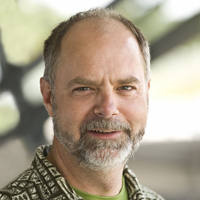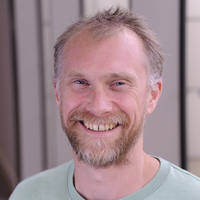Skarnes Group
Stem cell engineering
Archive Page
This page is maintained as a historical record and is no longer being updated.
The Skarnes Group left the Sanger Institute in 2017. This page is being maintained as a historical record of the work of the group and is no longer being updated. Bill Skarnes now leads a group at the Jackson Laboratory: https://www.jax.org/research-and-faculty/faculty/research-scientists/william-skarnes
The exploitation of mouse and human pluripotent stem cells to elucidate gene function has great potential for high-impact science and medicine. Not only can normal diploid stem cells be used as a model cell for basic cell biological processes, but they also have the capacity to differentiate into many different cell types in vitro. Furthermore, undifferentiated and differentiated cells can be grown in sufficient numbers to carry out genomic assays such as expression profiling, mass spectrometry and epigenetic profiling.
Thus, stem cells are an excellent model system to identify genes and genetic pathways required for basic cellular and developmental processes. Genetic resources, which support the investigation of mammalian gene function in a model cell, will significantly enhance our understanding of normal and variant mammalian gene products in health and disease.
The advent of site-specific nucleases and improved culture conditions now permits efficient engineering of human stem cells. In particular the CRISPR-Cas9 technology provides a facile and highly efficient tool for generating a range of alleles in cultured cells with little risk of off-target damage in human stem cells.
The Stem cell engineering group developed methods for the generation of homozygous knockouts and point mutations at scale. The team generated permanent distributable libraries of engineered mutations in human stem cells that will be coupled to focused phenotyping screens in cultured cells. Phenotypic data was compiled in an electronic encyclopedia of gene function and released to the community together with the mutant cell resource.
Our aims
The Stem Cell Engineering team had two major aims:
- To produce permanent genetic resources for the scientific community.
- To use engineered stem cells to understand basic cellular and development processes in a model cell.
Our approach
We established highly efficient methods for gene targeting in human induced-pluripotent stem (iPS) cells that take advantage of CRISPR technology and commercially-available media and reagents for feeder-free culture.
To generate homozygous mutant human iPS cells, we constructed short arm targeting vectors that contain an optimal drug selection cassette for experiments in human iPS cells. Following co-transfection of the targeting vector with Cas9 and single guide RNA (sgRNA) expression plasmids, we screened for clones that target one allele by homologous recombination and damage the second allele by non-homologous end joining. Our method lent itself to high-throughput genotyping: selective PCR amplification of the non-targeted allele, biallelic events can be identified by Sanger sequencing. We scaled this method for the production of hundreds of knockouts per year.
Functional analysis of transcription factors in stem cell differentiation
The ability to apply direct programming to human stem cells will be essential to provide appropriate cell types for the treatment of human disease by somatic cell replacement. A more complete understanding of transcription-factor networks that underlie stem cell differentiation will suggest ways to direct stem cells along specific cell lineages.
We performed genetic screens in human stem cells to elucidate gene regulatory networks that are essential for stem cell self-renewal and pluripotency. In the first instance, arrays of transcription-factor knockouts will be assessed for their ability to differentiate into cell types of the three primary germ layers (neurectoderm, mesoderm and endoderm). Knockouts that are deficient in differentiation will be candidates for over-expression studies aimed at directing cells along particular cell lineages.
Disease models
In addition to asking basic questions about cell-fate commitment, we were interested in developing fluent, scalable gene-editing methods for the generation of disease models in human stem cells. Most often, this entailed the generation of point mutations in coding exons or regulatory elements in a reference ES/iPS cell line or patient-derived iPS cell lines.
These experiments used CRISPR/Cas9 reagents (ideally Cas9 RNP) and single-stranded DNA templates to introduce single nucleotide changes and reversion alleles to produce matched sets of disease and control cell lines for phenotype analysis and drug screens.
Informatics tools
To support high-throughput engineering of human and mouse, we developed custom tools for the selection of optimal CRISPR sites, the construction of targeting vectors using Gibson assembly, and the display of genotyping results.
Our people
Previous group lead

Dr Bill Skarnes
Former Senior Group Leader
Previous core team member

Dr Jules Jacobsen
Senior Software Developer